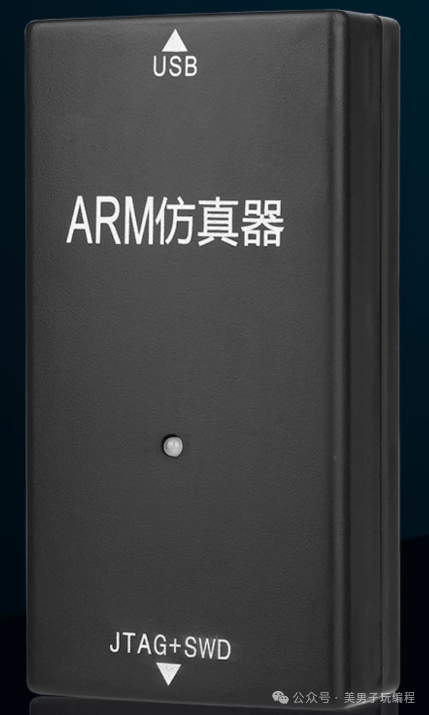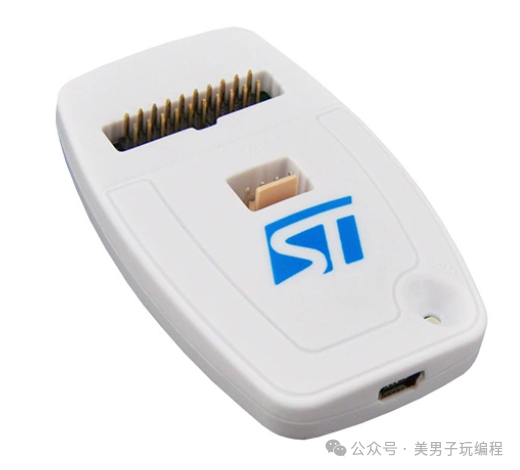
Click on the aboveblue text to follow us
MCU debuggers play an important role in embedded development.
The price difference is usually determined by multiple factors such as functionality, compatibility, performance, and support services.

1
Basic Functionality and Protocol Support for SWD
The two-wire debugging protocol (SWDIO and SWCLK) commonly used for ARM Cortex-M series MCUs.
Low-cost debuggers: Typically support SWD but may have weak support for specific features such as high-bandwidth real-time tracing.
High-cost debuggers: Not only support basic debugging but also advanced features of SWD, such as real-time data monitoring (SWO), chip power management, etc.
JTAG (Joint Test Action Group)
A standardized multi-pin debugging protocol used for high-end processors or complex systems.
Supports more debugging features, suitable for complex hardware environments.
Low-cost debuggers: May support JTAG protocol but with slower debugging speeds or limited support for large Flash chips.
High-cost debuggers: Support efficient JTAG communication, suitable for multi-core, multi-chip system debugging, and support more complex features such as boundary scan.
DAP (Debug Access Port)
ARM Debug interface, supports access to the core debugging module via SWD or JTAG. ARM’s standard interface, supports access to internal chip resources (such as registers, memory).
Low-cost debuggers: May use basic implementations with lower speed and compatibility.
High-cost debuggers: Fully implement the DAP protocol, support high-frequency operations, and greater data throughput, suitable for efficient debugging of complex systems.
2
Hardware Performance
Low-cost debuggers: Typically use low-cost microcontrollers as the core, which may be limited in the following aspects:
-
Slower data transfer speeds, affecting debugging efficiency.
-
Limited memory, making it difficult to support complex tracing or large Flash programming.
-
Poor electrical performance (such as pin protection, stability), which can lead to unstable debugging.
High-cost debuggers: Equipped with high-performance chips and dedicated hardware circuits:
-
Support higher debugging frequencies (such as SWD/JTAG frequencies above 10MHz).
-
Provide stable power supply and signal interfaces (such as automatic level matching, isolation protection).
-
Dedicated chips can achieve real-time tracing, code coverage analysis, and other advanced features.

3
Debugging Functions and Advanced Features of Basic Debugging
Low-cost debuggers: Support basic features such as breakpoints, single-step debugging, and variable observation.
High-cost debuggers: Support unlimited breakpoints (hardware breakpoints), complex conditional breakpoints, code execution statistics, and other advanced features.
Real-time Debugging and Trace
Low-cost debuggers: Limited real-time debugging capabilities, may not capture high-speed signals or real-time data.
High-cost debuggers: Can trace the execution path of instructions in real-time. Efficiently implement event tracing and data collection.
Multi-core Support
Low-cost debuggers: May only support single-core debugging.
High-cost debuggers: Support multi-core debugging, able to coordinate debugging of multiple processor cores.
Debugging Toolchain Support
Low-cost debuggers: May be limited to specific IDEs (such as Keil, IAR) or their simplified versions.
High-cost debuggers: Typically support more toolchains (Keil, IAR, Eclipse, Segger Embedded Studio, etc.) and provide official driver support.
4
Compatibility and Ecosystem Support
Low-cost debuggers: Typically optimized for a single brand or limited models of MCUs. Rare firmware updates, may not support newly released MCUs.
High-cost debuggers: Typically support multiple chip brands and models (such as ST, NXP, Silicon Labs, Nordic, etc.). Provide frequent firmware updates to ensure compatibility. May include dedicated debugging software (such as Segger Ozone).
5
Service and User Experience
Low-cost debuggers: Limited after-sales service. Lack of documentation and support resources. Debugging processes may encounter issues (such as crashes, communication failures).
High-cost debuggers: Provide detailed user manuals and technical support. Better user interfaces and tools (such as Segger J-Link providing a rich set of debugging tools). Offer local or remote support services.
6
Specific Comparison Cases of Low-cost Debuggers
ST-LINK
Advantages: High cost-performance ratio, suitable for beginners and simple development.
Limitations: Limited functionality (such as insufficient Trace support), slow updates.
CMSIS-DAP Debugger
Advantages: Open-source, low cost.
Limitations: Slow speed, performance not as good as professional debuggers.
Segger J-Link
Advantages: Widely compatible, fast debugging speed, supports various advanced features.
Applications: Professional development, debugging of complex projects.
Keil ULINKpro
Advantages: Powerful tracing and performance analysis capabilities.
Applications: Performance-critical applications (such as real-time system analysis).
Selection Recommendations
For beginner development: Choose low-cost, feature-complete ST-LINK or open-source CMSIS-DAP.
For professional development: Choose high-performance, feature-rich J-Link or ULINKpro.

 Clickto read the original text for more exciting content~
Clickto read the original text for more exciting content~